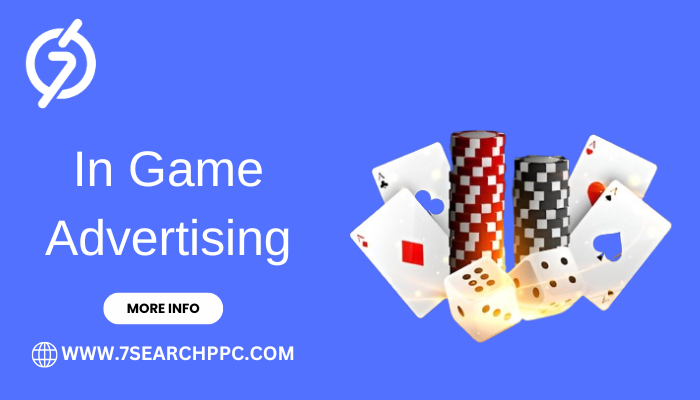In-Game Advertising in Germany: Strategies for Success

In-game advertising has emerged as a powerful tool for brands looking to engage with digital audiences. Germany, one of the largest gaming markets in Europe, presents a lucrative opportunity for companies to integrate advertisements seamlessly into gaming environments. With millions of active gamers and an evolving digital landscape, businesses can effectively advertise their game and enhance brand visibility. This article explores successful gaming digital marketing strategies for in-game advertising in Germany, providing insights into market trends, implementation techniques, and key considerations.
Boost Your Reach – Advertise Now!
The Growth of In-Game Advertising in Germany
Germany’s gaming industry has experienced significant growth over the past decade. With a population of over 80 million, approximately 58% engage in gaming across various platforms, including consoles, PCs, and mobile devices. This widespread adoption makes the German market ideal for in-game advertising campaigns.
Key Market Trends
- Rise of Mobile Gaming – The increasing number of smartphone users has led to a surge in mobile gaming, creating more opportunities for advertisers.
- Integration of AR & VR – Augmented and virtual reality games offer immersive ad placements that enhance user engagement.
- Programmatic Advertising – Automated ad placements ensure real-time bidding and precision targeting.
- Esports and Streaming Growth – The popularity of esports tournaments and streaming platforms like Twitch provides additional advertising avenues.
Effective In-Game Advertising Strategies
To succeed in in-game advertising in Germany, brands must focus on user engagement, seamless integration, and relevance. Below are key strategies to ensure success.
Native In-Game Advertising
Native ads are seamlessly integrated into the gaming environment, ensuring a non-intrusive experience. Examples include:
- Billboards in racing games – Digital billboards featuring brand advertisements in racing simulations.
- Product placements in RPGs – Real-world products appearing in game settings to enhance realism.
- Branded skins and items – Customizable in-game assets that promote a brand without disrupting gameplay.
Reward-Based Advertising
Reward-based ads encourage player engagement by offering incentives in exchange for viewing advertisements. Common types include:
- Video ads – Players watch short ads to earn in-game currency or bonuses.
- Survey-based rewards – Users answer brand-related questions to unlock exclusive game content.
- Sponsored challenges – Completing brand-sponsored missions grants players special rewards.
Playable and Interactive Ads
Interactive ads provide users with a hands-on experience, increasing engagement and brand recall. Strategies include:
- Mini-game ads – Advertisers create mini-games within existing games to introduce their products.
- Trial-based advertising – Players test a new game or app before downloading it.
- Gamified ads – Challenges that reward users upon successful completion.
Influencer and Esports Marketing
Collaborating with gaming influencers and esports teams can boost brand credibility. Effective approaches include:
- Sponsoring esports events – Brands gain exposure by sponsoring tournaments.
- Influencer partnerships – Gaming personalities promote products via live streams and social media.
- Custom-branded in-game items – Limited-edition branded assets endorsed by influencers.
Challenges in In-Game Advertising
Despite its potential, in-game advertising in Germany presents challenges that brands must navigate to ensure successful implementation.
Audience Sensitivity
German gamers value authenticity and can be resistant to intrusive ads. Ensuring ad relevance and seamless integration is crucial.
Regulatory Compliance
Germany has strict gaming digital marketing regulations, including the General Data Protection Regulation (GDPR). Advertisers must prioritize data privacy and obtain user consent for personalized ads.
Ad Fraud and Viewability
Issues such as bot traffic and ad fraud can affect campaign performance. Implementing fraud detection tools and choosing reputable ad networks can mitigate risks.
Measuring Success in In-Game Advertising
To optimize campaign performance, brands should track key performance indicators (KPIs), such as:
- Click-through rates (CTR) – Measures user interaction with ads.
- Conversion rates – Tracks users who take desired actions post-ad exposure.
- Engagement metrics – Assesses time spent interacting with ads.
- Return on Investment (ROI) – Evaluates overall campaign profitability.
Future of In-Game Advertising in Germany
As gaming technology advances, in-game advertising in Germany is expected to evolve. Future trends include:
- AI-powered ad personalization – Leveraging AI to deliver hyper-targeted ads.
- Blockchain for ad transparency – Enhancing security and reducing fraud.
- Expansion of cloud gaming ads – Integrating advertisements within cloud-based gaming platforms.
Conclusion
In-game advertising is a highly effective gaming digital marketing strategy that allows brands to connect with German gamers in an engaging manner. By leveraging native ads, reward-based incentives, interactive experiences, and influencer marketing, companies can advertise your game successfully while maintaining user engagement. With proper planning, regulatory compliance, and performance tracking, brands can unlock the full potential of in-game advertising in Germany’s thriving gaming ecosystem.


